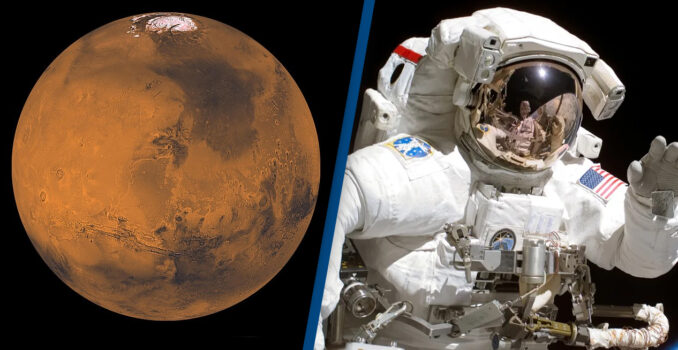Although there is indeed water on Mars, the majority of it is frozen and the rest is filled with salt, meaning it would be useless for future astronauts planning to land on the planet by 2033.
A team from Washington University in St. Louis has now developed a system whereby this unusable water can be transformed into fuel and oxygen, using electricity to break down the salty water into oxygen and hydrogen.
This two-sided system has reportedly been shown to operate in a simulated Martian atmosphere at -33 degrees Fahrenheit. One side splits the water to form a hydroxyl ion, while the other splits it once again to produce oxygen.
Professor Ramani explained:
Our Martian brine electrolyzer radically changes the logistical calculus of missions to Mars and beyond. This technology is equally useful on Earth where it opens up the oceans as a viable oxygen and fuel source.
In order to stay alive on Mars for any period of time, astronauts will need to manufacture some of the essentials found on Earth, including water and fuel.
NASA’s Perseverance rover is currently on the way to Mars, carrying instruments that use high-temperature electrolysis. However, the Mars Oxygen In-Situ Resource Utilization Experiment (MOXIE) will only produce oxygen, manufacturing it from the carbon dioxide found in the air.
The system developed by Professor Ramani’s team is capable of producing 25 times more oxygen than the MOXIE using the same amount of power. It can also produce hydrogen to fuel the astronauts’ trip back to Earth.
Professor Ramani said:
Our novel brine electrolyzer incorporates a lead ruthenate pyrochlore anode developed by our team in conjunction with a platinum on carbon cathode.
These carefully designed components coupled with the optimal use of traditional electrochemical engineering principles has yielded this high performance.
Thanks to its careful design and unique anode, the system will be able to function without the need to heat or purify the water source.
Pralay Gayen, postdoctoral research associate in Professor Ramani’s group and joint first author in this study, said:
Having demonstrated these electrolyzers under demanding Martian conditions, we intend to also deploy them under much milder conditions on Earth to utilize brackish or salt water feeds to produce hydrogen and oxygen, for example, through seawater electrolysis.
Such applications could reportedly prove useful in the defence industry back here on Earth, for example in manufacturing oxygen on demand in submarines.

























